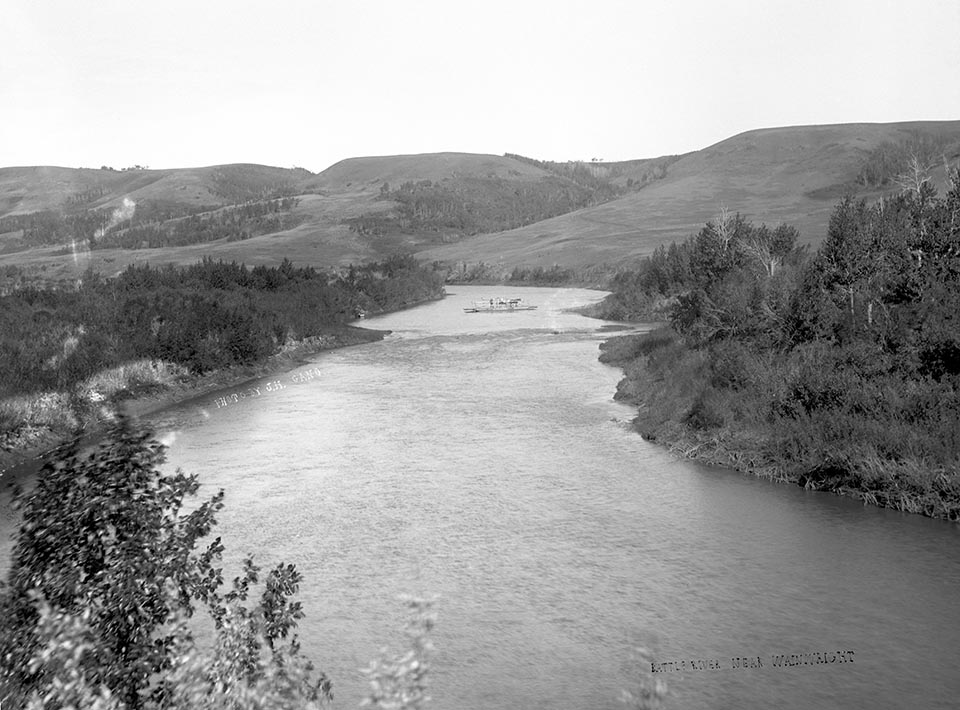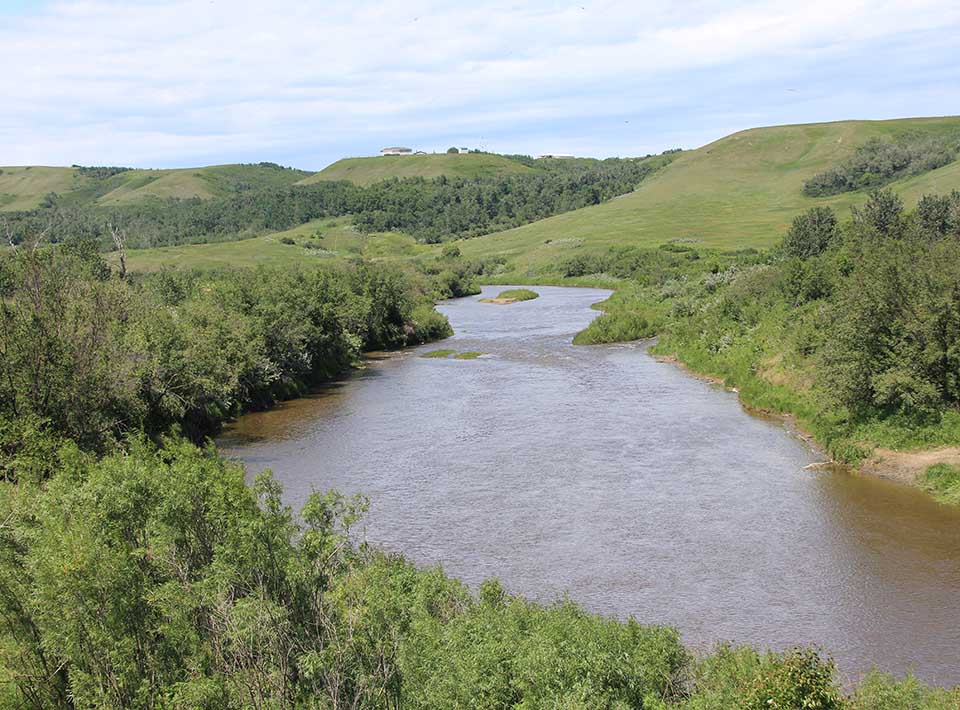Bison, People, Fire and Floods on the Boundary of the Aspen Parklands
The Battle River traverses the aspen parklands of the Canadian plains north of the treeless grasslands that span southern Alberta and Saskatchewan. This valley and the bluffs and dune areas nearby were covered with small groves of aspen and shrublands that provided two essential resources for past peoples wintering near bison herds– sheltered campsites for protection from severe weather, and wood for heat. These sites also had trees to construct pounds to corral bison, and, important in the equestrian era, aspen bark to feed horses.1 When camped in these sheltered locations, people hoped that wind-driven blizzards and deep snows on the plains would drive bison off the grasslands into parklands near their winter camps. Here bison could be or herded into pounds. But in “open winters” bison could avoid human predation by keeping to barren plains. The Missionary John McDougall described this situation at a camp of Cree near the Battleford River in 1865: “We were discouraged to find that these people were living from hand to mouth—that while the buffalo were within from sixty to one hundred and fifty miles distant, they (the bison) had not yet attempted to come north. The camp was still waiting for this….The rigor of the winter and the conditions of the grass and wood forbidding the camp moving any nearer to them.” 2
The collapse of First Nation and bison populations in the 1800s, and the subsequent settling of the aspen parkland by farmers, greatly changed this productive ecosystem.3 Evident from the repeat photographs, the cover of aspen and shrubs such as willow, wolf willow, and saskatoon has increased in areas not used as croplands. Pollen studies show that aspen cover began to increase as early as the 1860s, largely due to declining fire frequency, and possibly even due to less bison trampling, horning, browsing and other activities that damaged woody plants.4 In this area of the parkland, routine hunting to supply posts such as Fort Edmonton had begun to reduce local bison abundance as early as the 1850s. Cree hunters and camps began to move southwards to harvest bison that were by then most often found on the open plains nearer to the Red Deer River. 5
The repeat photographs also show a narrowing of the Battle River between the early 1900s and 2013, possibly due to fewer floods that remove shrubby vegetation along its banks. This could be the result of an interesting set of ecological effects. Ecologist Glynnis Hood studied interactions between fires, beavers, climate change, and hydrology in nearby Elk Island National Park. She and her co-authors report: “when combined with drought and herbivory, prescribed fire does not improve beaver habitat.”6 Perhaps more frequent floods on the Battle River in the 1800s resulted from fewer beaver dam impoundments due to heavy trapping that removed beavers, and frequent fires and bison plant damage that reduced woody materials for beaver dam construction. Recently, fire reduction provides abundant material for beavers to build dams, beaver abundance has rebounded from the fur trade period, and farmers have built water impoundments along many tributaries to the Battle River to water their stock. These activities, combined with climate changes such as less winter snow accumulation could cause fewer floods along the Battle River.
Footnotes and Map
- Vickers, J. R., and T. R. Peck. “Islands in a Sea of Grass: The Significance of Wood in Winter Campsite Selection on the Northwestern Plains.” In Archaeology on the Edge: New Perspectives from the Northern Plains, edited by B. Kooyman and J. Kelley, 95—124. Calgary, AB: University of Calgary Press, 2004. ↩
- McDougall, J. Pathfinding on Plain and Prairie. Toronto, ON: William Briggs, 1898. ↩
- Bird, R.D. Ecology of the Aspen Parkland of Western Canada in Relation to Land Use. Publication 1066. Ottawa, ON: Research Branch, Canada Department of Agriculture, 1961. ↩
- Weir, J.M.H., E.A. Johnson, and K. Miyanishi. “Fire frequency and the spatial age mosaic of the mixed-wood boreal forest in western Canada.” Ecological Applications 10 (2000): 1162-1177; Campbell, C., I. D. Campbell, C. B. Blyth, and J. H. Andrews. “Bison Extirpation May Have Caused Aspen Expansion in Western Canada.” Ecography 17:4 (1994): 360-362. ↩
- Colpitts, G., “The Methodists`Great 1869 Camp Meeting and Aboriginal Conservation Strategies in the North Saskatchewan River Valley.” Great Plains Quarterly 29 (Winter 2009): 3-27. ↩
- Hood, G.A., S.E. Bayley, and W. Olson. “Effects of Prescribed Fire on Habitat of Beaver (Castor canadensis) in Elk Island National Park, Canada.” Forest Ecology and Management 239 (2007) 200–209. ↩

